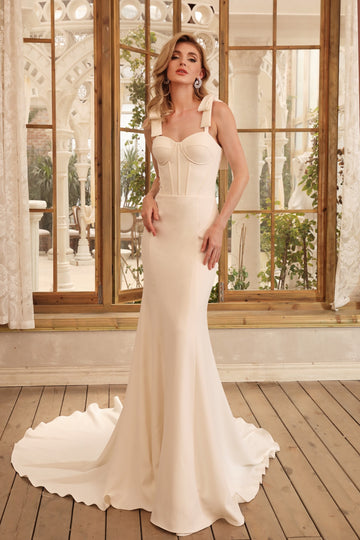Cultural Influences on Bridal Makeup Trends: A Comprehensive Overview
Cultural Influences on Bridal Makeup Trends: A Comprehensive Overview
Understanding the Impact of Culture on Bridal Makeup
Bridal makeup is not just about beauty; it is a profound representation of cultural traditions, personal identity, and historical significance. Across the globe, different cultures contribute to an assortment of trends that shape how brides choose to present themselves on their most special day.
Historical Context of Bridal Makeup
Bridal makeup has evolved through centuries, often mirroring the changes in societal norms and cultural values. In ancient civilizations, makeup was used by brides as a form of protection against evil spirits. For instance, Ancient Egyptians applied kohl around their eyes, believing it offered spiritual and physical protection. Likewise, in many Asian cultures, the concept of beauty is intrinsically linked to familial lineage and social etiquette.
Bridal Makeup Across Cultures
| Culture | Typical Bridal Makeup Features |
| Indian | Bright colors, intricate eye makeup, traditional bindi |
| Western | Soft and natural looks, emphasis on glowing skin, subtle tones |
| Chinese | Red pigments for luck, bold eyebrows, emphasis on a flawless complexion |
| Middle Eastern | Heavy eye makeup, bold lip colors, and contouring |
The Role of Social Media in Shaping Makeup Trends
With the explosion of social media platforms like Instagram, the beauty industry has experienced a remarkable transformation. Influencers and makeup artists have taken center stage, showcasing diverse bridal looks that blend traditional styles with contemporary flair. Social media is a treasure trove of styles, with hashtags such as #BridalMakeup and #WeddingBeauty connecting brides around the world and inspiring them to experiment with various cultural influences. The accessibility of tutorials and beauty hacks has further democratized the art of makeup.

Key Influences on Bridal Makeup Trends
Several pivotal influences contribute to the changes in bridal makeup trends globally.
1. Cultural Heritage
The rich tapestry of cultural heritage plays a vital role in determining bridal makeup styles. For example, in India, bridal makeup is characterized by vibrant colors and intricate designs, with brides often opting for bold red lips and dramatic eyes. Conversely, Western styles often embrace minimalism, focusing on a natural, glowing appearance. These distinct cultural elements are essential in creating a unique bridal identity.
2. Fashion Industry Trends
The fashion industry sets the stage for many trends, including bridal makeup. During major fashion weeks, designers often showcase bridal collections that dictate upcoming styles. The influence of celebrity weddings can also inspire brides to adopt similar looks. From Meghan Markle's understated beauty to Kim Kardashian's glam aesthetic, brides worldwide often look to these icons for inspiration.
3. Globalization
With globalization, cultures intermingle, leading to unique hybrids in bridal makeup. For instance, some Indian brides may incorporate Western elements, such as softer tones and natural looks, into their traditional suite. This melding of styles creates a rich aesthetic, allowing brides to express both their cultural roots and modern influences.
Bridal Makeup Techniques from Around the Globe
While cultural influences shape the style, the techniques used in bridal makeup can vary significantly.
1. The Art of Henna
In various cultures, intricate henna designs are an essential feature of bridal preparation. Particularly in Middle Eastern and South Asian weddings, brides adorn their hands and feet with henna patterns, which may complement their makeup while symbolizing beauty and fertility.
2. Contouring Techniques
Modern bridal makeup often involves expert contouring, with trends fluctuating between soft and dramatic enhancements. In Western societies, blending becomes essential to achieve that airbrushed effect, whereas, in Middle Eastern cultures, bold and precise contouring defines the face, accentuating features like cheekbones and jawlines.
3. Traditional Powders vs. Modern Foundations
In regions like Southeast Asia, traditional face powders (like talcum or herbal powders) have historical significance and are prioritized over modern foundations. Conversely, Western bridal makeup leans heavily towards liquid foundations and setting sprays, emphasizing longevity and durability throughout the wedding day.
Tips for Choosing the Perfect Bridal Makeup
Choosing the right bridal makeup can be daunting. Here are some significant considerations:
- Understand Your Cultural Background: Embrace the elements that resonate with your heritage, whether through colors, styles, or rituals.
- Highlight Your Features: Choose makeup that accentuates your unique features, selecting colors that complement your skin tone.
- Know Your Wedding Theme: The theme of your wedding can influence the type of makeup you choose. For instance, a rustic wedding might lean towards natural looks, while an extravagant celebration may call for glamour.
- Consider Longevity: Weddings can last for several hours, so opting for makeup that is long-lasting and weather-resistant is imperative.
- Consult Professionals: Hiring a makeup artist who understands both traditional and modern techniques can significantly help in delivering the desired look.
Conclusion
Bridal makeup trends are deeply embedded in cultural influences and evolving fashion standards. From vibrant Indian hues to the minimalist elegance often preferred in Western cultures, these trends reflect personal expression and heritage. With the additional pressures of social media and globalization, brides today find themselves with an abundance of options to create a unique bridal look that represents their individuality. It is essential for brides-to-be to consider their cultural backgrounds, personal styles, and practical needs when selecting their bridal makeup, ensuring they feel beautiful and confident on their special day. By understanding the cultural aspects and embracing the beauty of traditions, brides can honor their roots while making unique choices tailored to their preferences.
